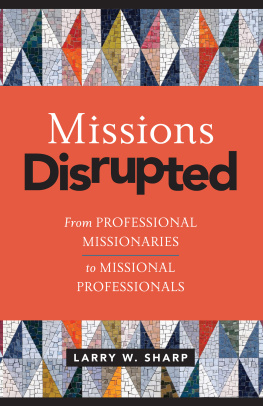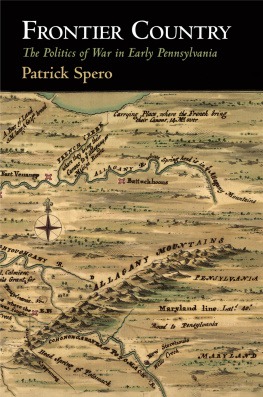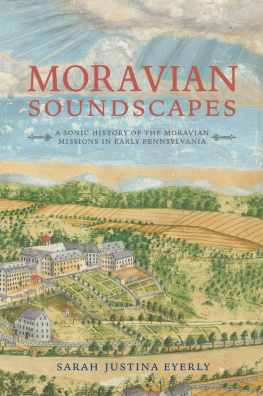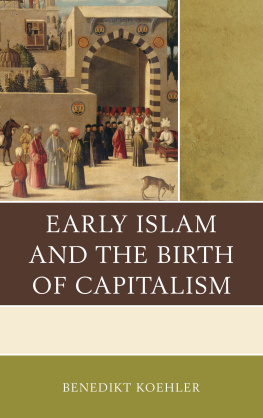EARLY AMERICAN STUDIES
Daniel K. Richter and Kathleen M. Brown, Series Editors
Exploring neglected aspects of our colonial, revolutionary, and early national history and culture, Early American Studies reinterprets familiar themes and events in fresh ways. Interdisciplinary in character, and with a special emphasis on the period from about 1600 to 1850, the series is published in partnership with the McNeil Center for Early American Studies.
A complete list of books in the series is available from the publisher.
Copyright 2009 University of Pennsylvania Press
All rights reserved. Except for brief quotations used for purposes of review or scholarly citation, none of this book may be reproduced in any form by any means without written permission from the publisher.
Published by
University of Pennsylvania Press
Philadelphia, Pennsylvania 19104-4112
Printed in the United States of America on acid-free paper
10 9 8 7 6 5 4 3 2 1
Library of Congress Cataloging-in-Publication Data
ISBN : 978-0-8122-2185-5
In loving memory of
Gene E. Carte and Elaine H. Carte
and for Jeffrey
CONTENTS
CHAPTER ONE
The Pilgrims Mission
CHAPTER TWO
Interconnected Worlds
CHAPTER THREE
Moravian Expansion in the Mid-Atlantic
CHAPTER FOUR
The Moral Parameters of Economic Endeavor
CHAPTER 5
Atlantic Currents: Global War and the Fate of Moravian Communalism
CHAPTER 6
Two Revolutions: Ending the Oeconomy and Losing the Missions
CHAPTER 7
A Change in Mission
CHAPTER 8
Unraveled Strands
INTRODUCTION
On the evening of September 29, 1751, one of the Moravian missionaries stationed among the Delaware and Mahican Indians in the Lehigh Valley of northeastern Pennsylvania jotted down the events of the day. He wrote in German, the language of the international Moravian community, and he knew his diary would be circulated to members of the church throughout the world. The Moravians, a Protestant sect founded in 1727 by Count Nikolaus Ludwig von Zinzendorf and based in Germany, were key players in the rise of international evangelicalism. They established missions throughout the Atlantic world, and were especially attracted to Pennsylvania because of the profession of religious tolerance by the colonys Quaker founder, William Penn. When thinking over what to record, the missionary focused on the daily business of Gnadenhtten, the community whose spiritual care was in his charge. Several residents had departed that morning for a Moravian synod at Quittapahilla, in central Pennsylvania, while some of the white Brethren who stayed behind worked, despite the rainy weather, to make floats out of boards from the sawmill so that lumber could be sent downriver to the central Moravian town at Bethlehem. In the evening, he recorded, men from Bethlehem had arrived to transport the wood. They told their coreligionists that the Moravians community ship, the Irene, had arrived in New York from London. The good news that her passengers were safely in Bethlehem after their long trip from Germany prompted members of the mission town to spill some joyful little tears, and one heard some Honnewe, Honnewe, which was, according to the diarist, the Indian way of saying dear Savior, dear Savior. Their friends secure, the Moravians rested comfortably in the knowledge that their missionary work among Pennsylvanias Indians, and their larger community, was progressing smoothly.
At the same time as the missionaries rejoiced, the comings and goings of the Irene were communicated in a very different form to a very different audience. As far as New Yorks merchants were concerned, the vessel was an ordinary merchant ship. That it was owned by a religious group mattered little to the dry-goods dealers who purchased space in her hull. That the Moravians used the profits gained through the Irene to support missionary work probably mattered even less to them. On October 3, a notice appeared in the New York Gazette announcing that the Irene would sail with all Expedition bound for London and Amsterdam, and that she takes Freight at a reasonable Rate and would depart full or not. Some roofing tiles had been imported on the last voyage and were available for sale. These notices assured potential shippers that she was a reliable trading vessel that they could count on to transport valuable goods across the ocean.
These two quite different accounts of the Irenes arrival resulted from the confluence of two important trends in early modern history. The Moravians and their settlement at Bethlehem, Pennsylvania, sat at the nexus between them. The first was the rise of evangelical, revivalistic Protestantism, and it explains the presence of central European missionaries on the Pennsylvania frontier, as well as in New York, London, and indeed throughout the Atlantic world. Simultaneously, the growth of the transatlantic economy provided the means for the Moravians material labors: wood from the sawmill became building materials for Bethlehem and neighboring settlements; the shops they helped build sold goods from Philadelphia and London alongside furs and tools procured closer to home; the roofing tiles imported on the Irene likely adorned some building in the growing port city of New York; advertisements and regular shipping patterns signaled the increasing maturity and stability of transatlantic trade. Taken together, jottings in a Moravian mission journal and advertisements in a New York newspaper illustrate how international evangelicalism and the developing market economy interwove in the mid-eighteenth century.
Yet the convergence of these two trends in the activities of the spiritually and materially industrious Moravians also signals something further: the ultimate intertwining of religious and economic concerns in the daily lives of early Americans. The white Brethren in Gnadenhtten were there to run the sawmill, but they worked alongside Indians who were part of the Moravians far-reaching mission efforts. Many of the Europeans were themselves, at one point or another in their lives, missionaries bent on converting souls to Christianity. The town to which Gnadenhttens lumber was sent, Bethlehem, was communitarian in 1751, meaning that its residents, bounded by shared religious purpose, functioned as a single economic entity. But this unusual economic model based on spiritual community did not prevent the Moravians from engaging in all sorts of entrepreneurial activity. In fact, it enabled them to make all that they could of the commercial advantages the eighteenth-century Atlantic world had to offer. Chief among their efforts was the Irene, a ship traveling steadily between North America and Europe, transporting members of the community alongside trade goods. The Moravians religious and economic lives constituted a single web stretching from central Europe to the reaches of Pennsylvanias northern frontier. Trading ties begot converts, religious networks expedited financial relationships, and the production and sale of trade goods bolstered missionary communities. The Moravians artisans and merchants, as they tanned leather, forged tools, or oversaw the loading of barrels of sugar into a ship, labored for the missions. For the Moravians, commercial success and spiritual well-being were inextricably connected.








